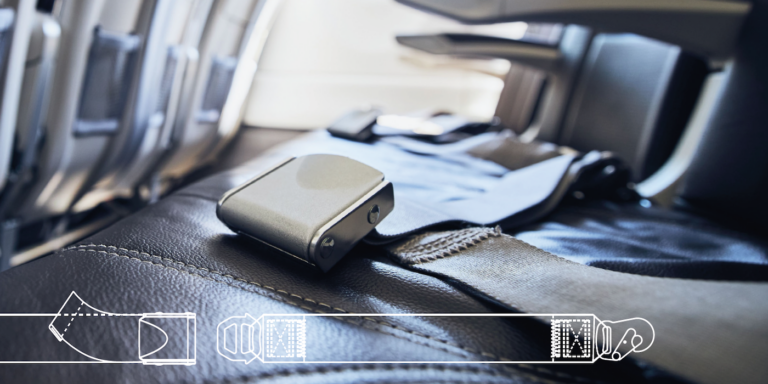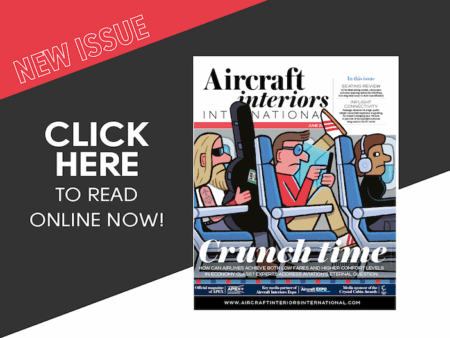Whether you’re a seatmaker, design partner, airline, or play any of the other crucial roles in keeping travellers safe, you’ll know how complex it can be to integrate passenger restraint systems into aircraft seating. Such work is the focus of Schroth Safety Products (“Schroth”), whose motto is ‘safety through technology’.
In this report, we’ll explain how we can help you develop the perfect solution for your seat, cabin and aircraft, as well as outlining how some of aviation’s most complicated and in-depth regulations work, when it comes to seat design. We will also discuss the advancing technical integration of seats and their occupant restraint systems, and how our work as a restraint system manufacturer can help seatmakers certify new products faster and with less effort.
While working on this report, we also aimed to make it an invaluable resource for explaining the intricacies of seat and cabin certification to non-expert colleagues and contacts. We hope it will be similarly helpful for you and your colleagues as a primer or introduction document.
Navigating the regulatory process
Air safety regulations and certification are constantly changing. Whether it’s 14 CFR 121.311, CS-25, TSO-C114, CRI-A08, ETSO-C127b, SAE8049, or one of the other myriad regulations, special conditions, equivalent safety findings – or any other part of this complex cog that keeps passengers safe – we know it like the backs of our hands.
Schroth works as part of the SAE SEAT committee to develop standards like AS 8049, AS8043 and many more, and can provide advice, recommendations and solutions at any point in the design and certification process.
The regulatory framework
Keeping passengers safe is a complicated task, and the regulations from civil aviation authorities like the USA’s FAA and Europe’s EASA are just the starting point. Most – but not all – of the time these regulations are harmonised, with the FAA and EASA saying the same thing. We know where they’re not: for example where the FAA has been working recently on updates to TSO-C127c. But, in general, the primary legislation is contained in the sections of the FAA’s 14 CFR Part 25 or EASA’s CS-25, like section 25.785, which covers safety belts.
Certain aircraft equipment is certified against the FAA Technical Standard Order (TSO) or EASA European Technical Standard Order (ETSO), and for seatbelts and restraint systems that is TSO or ETSO C22(g) and C114. These TSO/ETSO documents refer onwards to minimum performance standards set by SAE International, formerly the Society of Automotive Engineers and other similar standards groups for materials.
In this case, that’s SAE AS8043 and AS8049. It’s all very technical and detailed, and we’d know: we’ve been a member of these organisations for more than 20 years, and at the time
of writing have several staff members contributing to these standards organisations to keep passengers safe.

But if something – say, a novel or innovative kind of seat – isn’t covered in the TSO/ETSO documents, that’s where things get complicated, with individual certification demonstration
processes. The FAA calls them Special Conditions, and at EASA they’re Certification Review Items, but they are both formal methods to certify cutting-edge technologies.
HIC – the head injury criterion
Ensuring that a seating product is able to be safely certified and operated is a top priority, and the successful integration and certification of occupant restraint systems is key.
While there are many kinds of qualification required – dynamic testing, static testing, integration testing, flammability testing, toxicity and smoke testing – one of the more complicated elements about the certification process is the Head Injury Criterion, or HIC for short. Many people are familiar with the idea of automotive crash test dummies, and the system is similar – but separately complex in a variety of ways.
At its core, HIC is a measure of the likelihood of a head injury arising from an impact: in this case, the forward motion and rebound motion in a typical crash scenario. HIC includes the magnitude of head acceleration as well as the duration of the acceleration. HIC is calculated during both the forward motion and the rebound phase, the latter being particularly important when the head strikes a hard surface.

HIC isn’t just about impact with the seat in front, it’s about acceleration, deceleration and the rebound after impact. All of these factors can create problems for your seat.
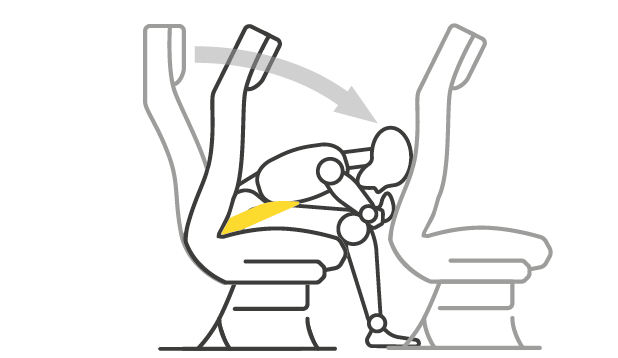
In economy class, the seats in most rows use a breakover feature that allows the seatback to pivot during an impact, acting as a sort of crumple zone. A standard two-point lap belt, of the type that most people would think of as the usual airline seatbelt, is typically sufficient for these standard configurations.
But that’s not possible in exit rows, where seats must remain in place so as not to impede evacuation. You might think you could add a shoulder belt there, and in some cases that is possible, but it means that the seat has to be strengthened to take account of the high shoulder belt loads. What’s more, if that seat has to be strengthened, that means it can’t have the breakover feature that is standard on most of today’s economy-class passenger seats. As a result, every seat in every row behind that strengthened seat would also have to have a shoulder belt, and to be strengthened itself. Altogether, that means a lot of extra weight, complexity, and cost.
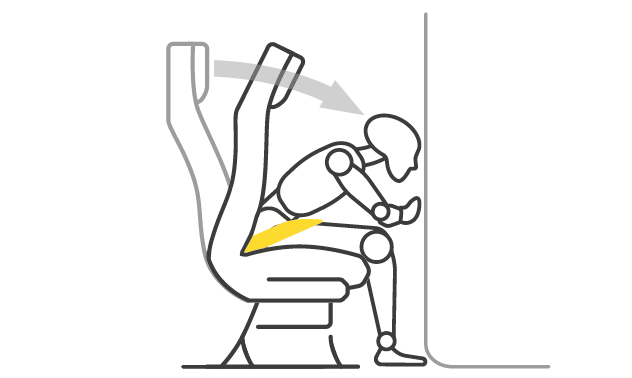
In bulkheads, too, either the passenger must be spaced far enough behind to completely miss the bulkhead, or a restraint system or airbag must be used. These are massively complex engineering challenges, but Schroth has solved them time and time again for seatmakers and airlines of all kinds using expertise and engineering know-how.
In premium economy, business and first class, meanwhile, things get even more complicated, with herringbone seats angled away from the centre-line of the aircraft, seats facing towards the side or rear, feature elements or privacy wings that can come into play, suite doors, and much more. And regulations are evolving and becoming more and more stringent all the time.
Whether it’s 16g certification for newer aircraft, changes to Special Conditions and CRI documents, updated standards, additional areas of regulatory concern like the neck injury element or free flail, we live and breathe this kind of technical detail.
What about the neck injury criterion?
Nij, the neck injury criterion for the cervical spine, refers to particular ways in which we can now simulate the human body to act during a crash.
Take an airbag: in most cars, you’re wearing a three-point belt and the steering wheel or dashboard faces you at a very limited range of distances, and the primary airbag inflates almost directly out at you, against your body’s motion. In most airline cases, the airbag is contained within the seatbelt, usually a lap belt. This means that, when it inflates, it is moving upwards, which creates a number of challenges around ensuring that it doesn’t move the head upwards with too much force. Moreover, compared to an automotive driver or passenger airbag, an airbag contained in an aircraft passenger seatbelt inflates at a very different angle.
As a result, one of the certification challenges is to ensure that its inflation performance is consistent, and also that it avoids any adverse effects on the occupant’s head and body. Similarly, anything in the path of the head – an inflight entertainment monitor, a business-class cocktail table, or a surface above a staggered footwell, say – needs to be accounted for when designing seatbelt and airbag solutions.
And adding angles into the mix, like with modern herringbone seating, means that real expertise and experience is needed to make certification work.

Finding the right solution for successful certification
Ensuring passenger safety during a crash situation is massively complex, with a wide range of specific and sometimes uncodified requirements. These testing requirements include static tests of seats independently, seats in rows with others, interaction with monuments in front of seats – and that’s before we get into other important questions like flammability, smoke toxicity, and resistance to chemical corrosion. That last question has become even more critical during the Covid-19 pandemic, when cleaning routines have become more strict than ever before, with new products and protocols being implemented by airlines and their cleaning providers.
Each situation is different, and a full range of products is available that can meet every need.
Two-point lap belts
At its most basic, though, when most people think of airline seatbelts they think of a two-point belt, with attachments to the seat at either side of the hip and a clasp that buckles at the front. This is, indeed, the easiest way to keep a passenger secure, and it is entirely suitable to keep them in place during turbulence.
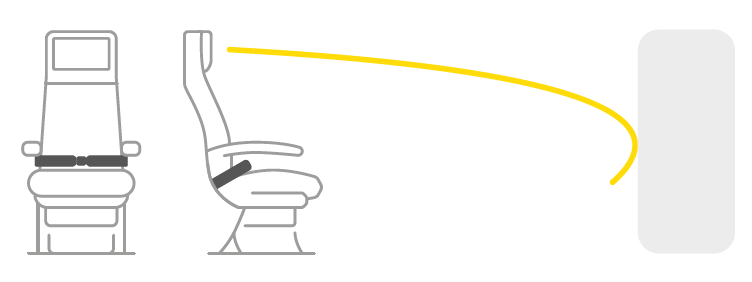
For most economy class seats, it will also be suitable for passengers during critical phases of flight, including taxi, takeoff and landing. Thanks to the relatively limited space for movement, critical issues such as limb flail are reduced, while the generally smooth and streamlined appearance of modern seats means that there are few problems around striking parts of the seat that might be sticking out.
But in situations where there is more space than is usually found between economy class rows – a front row or exit row seat, for example, or a seat in premium economy, business or first class – there may be other factors to consider.
Y-belts
The next step up in complexity of restraint is a Y-belt, where there are four points of attachment towards the lower end of the seat, one close to horizontal to the seatback and one at a diagonal. The two extra attachment points add further restraint around the hip in particular, and typically help reduce the occupant’s head path – in other words, the total length of the pivoting head and body – in a 16g test by around 2in.
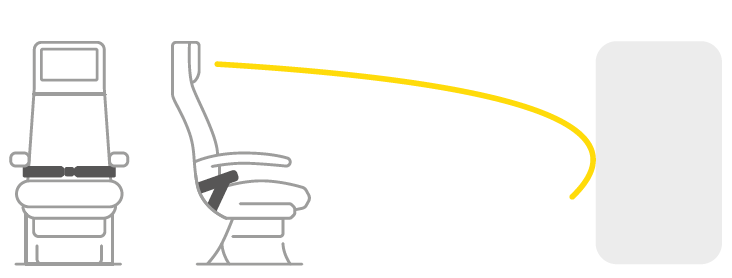
That said, it is complicated: the higher point of pivot for the body means that “submarining” – where a passenger slips under the belt – can occur. This is a particular risk for occupants smaller than the standard dummy size, whose safety we know is coming under increasing scrutiny from regulators.
Here, even more than usual, it’s important to take expert input that looks at the seat and the belt system holistically in order to ensure a certifiable combination of seat and restraint. That’s especially true with the way we see regulators trending, not just in terms of updating TSO and ETSO regulations, but in their interim guidance and individual certification result judgments as well.
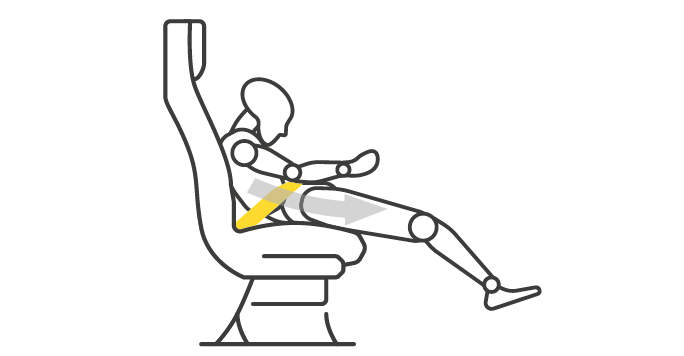
3-point restraint system
Any passenger who has travelled in a modern automobile will be familiar with the concept of a three-point seatbelt: one point of attachment either side of the hip and a third point at the shoulder. So why not in the aircraft?
To start with, since a lap belt is perfectly adequate for inflight turbulence, the additional shoulder belt of the three-point restraint system is there to provide the required extra level of protection during the critical phases of flight: taxi, takeoff and landing. That’s why most three-point belts latch on to the lap belt for those phases, adding a little bit of complexity, but leaving passengers less encumbered during cruise. With that third point of attachment, passengers’ upper bodies are kept safe during deceleration, with the load passed into the upper portion of the seatback where the belt is attached.
And that’s the complicated factor here. In regular economy class with two-point belts or even Y-belts, seats are designed with a breakover feature – essentially, to fold forward if struck from behind by a passenger in a crash, slowing the impact and reducing injury.
But if the upper portion of the seatback has to take the load of the shoulder belt, it can’t use a breakover feature in the same way. So, if you were thinking of adding a three-point shoulder belt for the bulkhead row or an exit row, every seat in the cabin behind that row would need to have a three-point shoulder belt too. That would require a major change to cabin design and alter the economics of the cabin configuration. For three-point shoulder belts in economy, you’d also need to add a substantial amount of structural integrity to the seat – as well as routing for the shoulder belt, inertia reel and possibly the pretensioner system and its sub-components – all of which together would mean a lot of extra weight and complexity.
In business class, first or even premium economy class, seats are far enough apart that the passenger behind is unlikely to need the breakover. We’ll come to that shortly.
Pre-reclined? No problem.
A growing number of airlines are cutting the weight, complexity, cost and potential inflight passenger frustrations of reclining seats, especially in shorter haul economy cabins, and introducing seats without a recline function but with a backrest that starts in what would be a slightly reclined position. These are often called “pre-reclined” seats. These seats can be very helpful operationally – and many passengers are vocal about preferring them in tight confines – but they do come with some complexities to think about when it comes to certification.
In particular, pre-reclined seats tend to have a seat pan that has a slightly lower angle than reclining seats. This can sometimes lead to submarining, where passengers would slide underneath the seatbelt in a crash situation.
Fortunately, there are ways to fully mitigate this risk, using expertise to integrate the seatbelt design with that of the seat.
Two-point lap belt airbag
As a result of the “every row behind” complexities of three-point seatbelts, the addition of an airbag to a two-point lap belt system can be technically complex – but, from a certification perspective, necessary as a solution. Again familiar to passengers from the automotive world, airbags inflate suddenly on impact and cushion the passenger’s body from the forces acting on them.
But again, things are slightly different in the aviation world. Most car airbags are in the steering wheel or dashboard, meaning they can inflate directly towards the passenger to cushion them. Fitting an airbag system into a lap belt, however, means that the airbag’s deployment also comes with an upwards motion. In addition, the occupant‘s arm position is a variable that is difficult to account for, meaning that the airbag can be directed into different positions based on arm contact during inflation. This can be complicated to manage from a certification point of view, particularly with concerns around the HIC and neck injury elements.
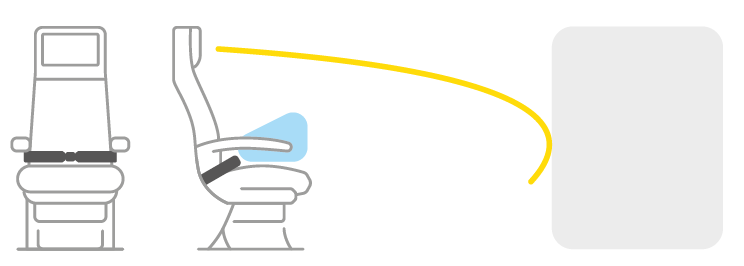
Apart from certification challenges, some passengers find lap belt airbags bulky and less comfortable during cruise than a standard two-point lap belt, and questions about their suitability for larger or pregnant passengers are still being studied.
Structure-mounted airbags
Monument-mounted airbags in the wall ahead of the front row are certainly an option, but their deployment – further away from the occupant than in a car – comes with its own complications. Those complications include the fact that structure-mounted aircraft airbags are often combined with two-point lap belts, which makes a huge difference when compared with three-point belts in cars.
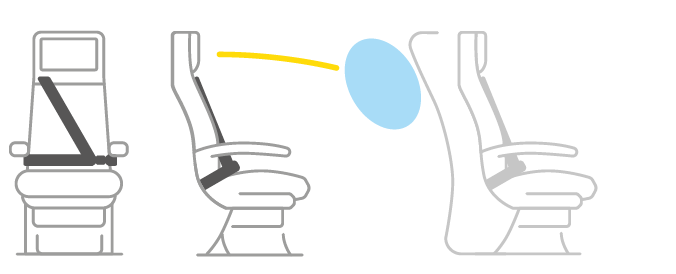
The effect is that the aircraft passenger is travelling at full speed into the airbag, while the car occupant’s upper body is already restrained, resulting in a lower impact speed. Airbag systems are typically more expensive to manufacture, require additional maintenance and inspection, and increase complexity.
That said, as complex as it is to make an airbag system work properly, in some cabin environments it may be the best option available for certification of the seat within that environment.
The oblique seating question
At present, the angle at which a seat is positioned relative to the centreline of an aircraft makes a substantial difference to how it is certified. The three major categories depend
on the angle of the seat away from the centreline of the aircraft, where 0° would be facing exactly forwards:
• 1-18° (forward-facing seats)
• 18-45° (oblique seats, like herringbones and some other pod-style seats)
• 80-100° (side-facing seats)
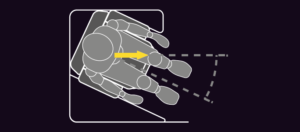 As an example of how complicated the regulations around seat safety can be, seats in the 45-80° category are not presently covered in regulations, and certification requirements would need to be agreed with the authorities on a case-by-case basis. Forward- and side-facing seats are covered in TSO requirements or SAE standards, which Schroth follows carefully, and in some cases contributes to working groups developing future standards and requirements.
As an example of how complicated the regulations around seat safety can be, seats in the 45-80° category are not presently covered in regulations, and certification requirements would need to be agreed with the authorities on a case-by-case basis. Forward- and side-facing seats are covered in TSO requirements or SAE standards, which Schroth follows carefully, and in some cases contributes to working groups developing future standards and requirements.
 Each of these seat types comes with different requirements in terms of certification, and expertise is required to help seat manufacturers and airlines certify them successfully. With the growth of long-haul single-aisle aircraft in the market like the Airbus A321XLR version of the A320neo family, or the Boeing 737 MAX, seats are being launched that are at a greater angle than ever away from the centreline. This is creating a wide variety of fascinating challenges to solve using restraint tools.
Each of these seat types comes with different requirements in terms of certification, and expertise is required to help seat manufacturers and airlines certify them successfully. With the growth of long-haul single-aisle aircraft in the market like the Airbus A321XLR version of the A320neo family, or the Boeing 737 MAX, seats are being launched that are at a greater angle than ever away from the centreline. This is creating a wide variety of fascinating challenges to solve using restraint tools.
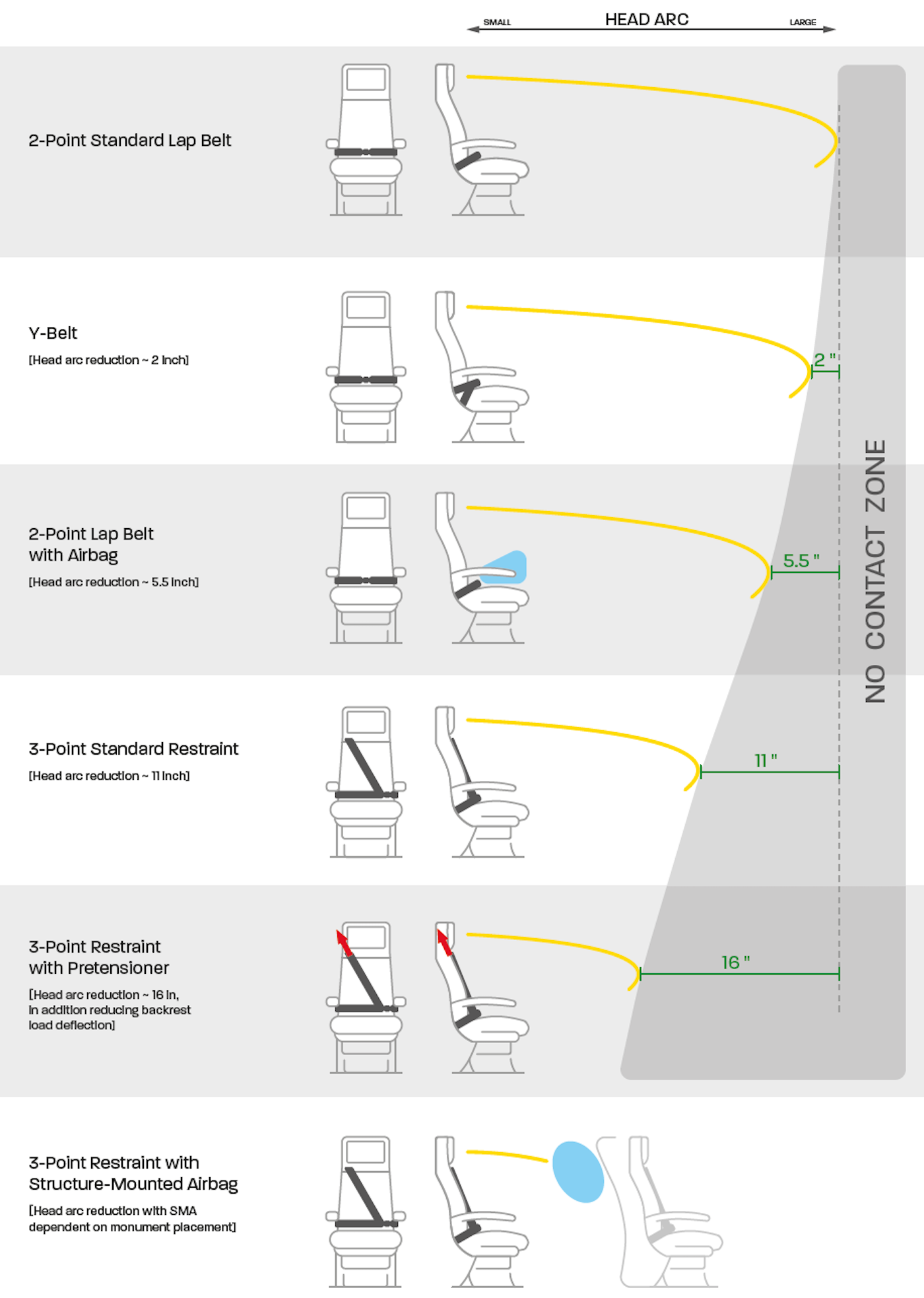
Options in focus: premium classes
The premium class experience – in premium economy, business and first class – is markedly different when it comes to the strategy, tactics and technology for selecting a restraint system.
The biggest fundamental question now and in the near future is, in essence, “airbag or shoulder belt?”. A decade or two ago, that answer tended towards airbags, and some fully flat business-class seats, particularly those arranged on an oblique angle or in a herringbone configuration, offered either in-belt airbags, wall-mounted airbags or, in some rare cases, a combination thereof.
Over the last 15 years, and particularly in the last 10, we’ve seen much more passenger acceptance of shoulder belts. Part of this is something of a fait accompli as the result of regulators’ growing focus on the twisting motion of passengers in an oblique seat, but part of it is also something of a trickle-down effect in terms of passenger experience and understanding.
One airline, which installed three-point belts in its first-class seats, later found that its business-class passengers and frequent flyers recognised them and understood almost instinctively how to use them – but even more, found them to be something of a marker of luxury, the kind of solution that was found in very spacious first-class seats.
Many seatmakers, airframers and airlines are starting to prefer shoulder belts for a number of reasons: they’re less costly, less complicated, and require less maintenance than airbags. In addition, with HIC and Nij in particular, regulators are requiring more and more testing of airbags. But there are some kinds of onboard products – the latest generation of business class mini-suites in particular – where spot airbags can help seat designers achieve certification. This is particularly true in some modern seats where the sculpting of the seat shell, surfaces, screens and storage areas might be part of the test dummy’s forward or rebound motion. In such demanding seat environments, spot airbags provide extra protection for critical areas, in addition to the standard three-point restraint system.
But there are new technologies that can also make a big difference. Pretensioners, for example, which pull a passenger a little further back into their seats in the event of deceleration, can reduce flail substantially. These can reduce the forward movement of the upper body in a 16g dynamic testing by an additional 5in, when integrated into the shoulder belt of a three-point restraint system. At the same time, they are substantially lower maintenance than airbags, and are much faster and easier to integrate into an existing seat design.
Pretensioners are also much less problematic than airbags in the case of inadvertent deployment. If one deploys, all that happens is a section of the seatbelt retracts. With an airbag, the full canister is released into the bag, or at the very least a partial deployment of the device occurs, which can be costly and complicated to replace.

We hope this guide has been helpful, and welcome any questions or comments that you have about safety, certification or further details. Whether you’re a seatmaker or an airline, whichever kind of seat you are considering, and whatever its certification challenges, Schroth’s safety through technology approach can help you certify your seat swiftly and make your passengers happy.


